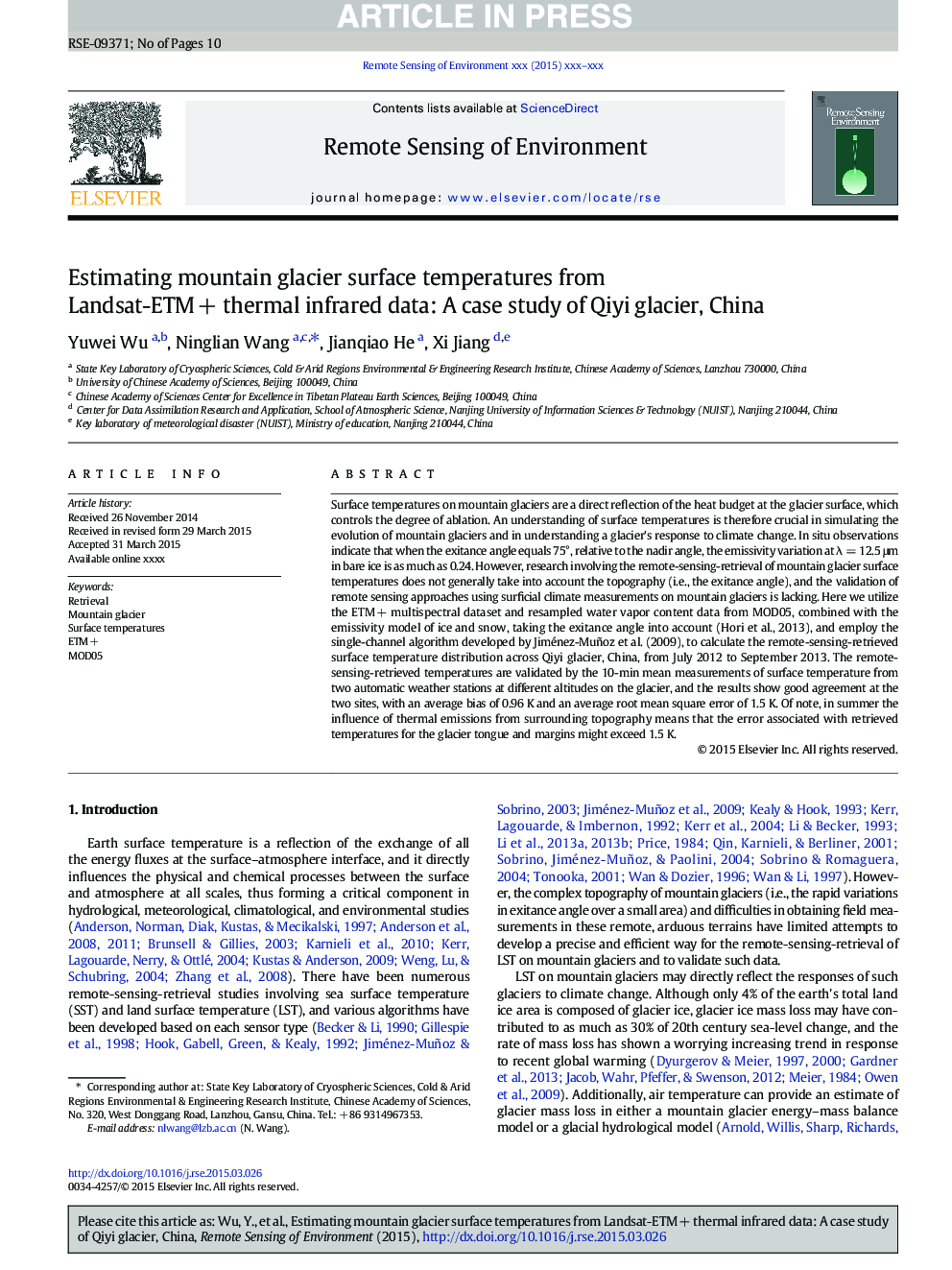| Article ID | Journal | Published Year | Pages | File Type |
|---|---|---|---|---|
| 6346137 | Remote Sensing of Environment | 2015 | 10 Pages |
Abstract
Surface temperatures on mountain glaciers are a direct reflection of the heat budget at the glacier surface, which controls the degree of ablation. An understanding of surface temperatures is therefore crucial in simulating the evolution of mountain glaciers and in understanding a glacier's response to climate change. In situ observations indicate that when the exitance angle equals 75°, relative to the nadir angle, the emissivity variation at λ = 12.5 μm in bare ice is as much as 0.24. However, research involving the remote-sensing-retrieval of mountain glacier surface temperatures does not generally take into account the topography (i.e., the exitance angle), and the validation of remote sensing approaches using surficial climate measurements on mountain glaciers is lacking. Here we utilize the ETM + multispectral dataset and resampled water vapor content data from MOD05, combined with the emissivity model of ice and snow, taking the exitance angle into account (Hori et al., 2013), and employ the single-channel algorithm developed by Jiménez-Muñoz et al. (2009), to calculate the remote-sensing-retrieved surface temperature distribution across Qiyi glacier, China, from July 2012 to September 2013. The remote-sensing-retrieved temperatures are validated by the 10-min mean measurements of surface temperature from two automatic weather stations at different altitudes on the glacier, and the results show good agreement at the two sites, with an average bias of 0.96 K and an average root mean square error of 1.5 K. Of note, in summer the influence of thermal emissions from surrounding topography means that the error associated with retrieved temperatures for the glacier tongue and margins might exceed 1.5 K.
Related Topics
Physical Sciences and Engineering
Earth and Planetary Sciences
Computers in Earth Sciences
Authors
Yuwei Wu, Ninglian Wang, Jianqiao He, Xi Jiang,
